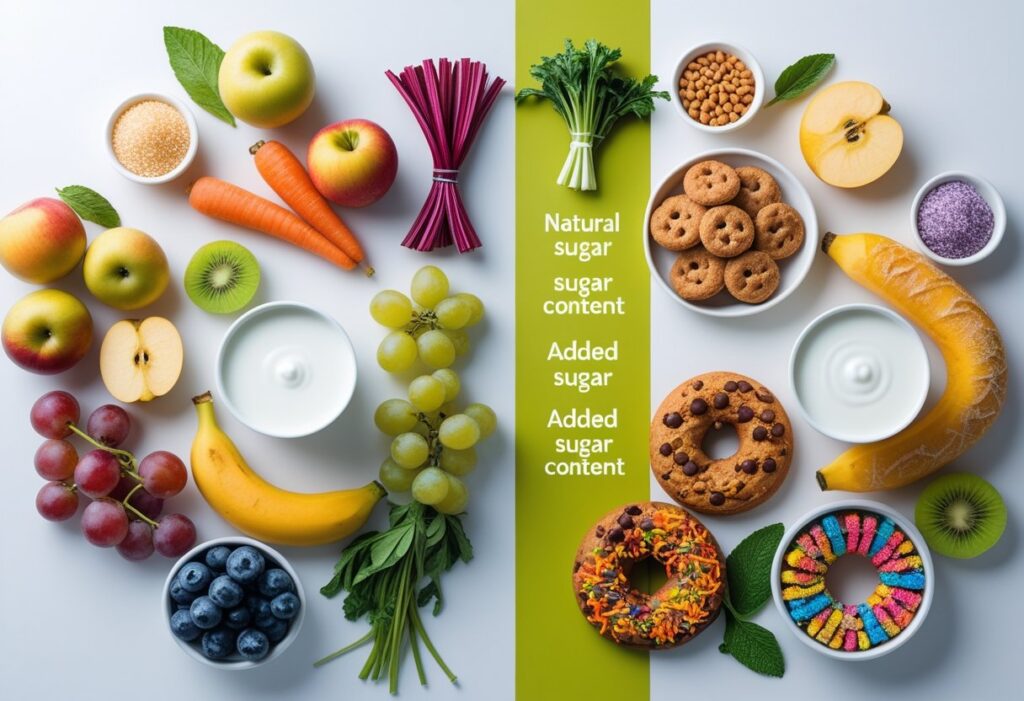As a licensed pharmacist with years of clinical experience, I understand how challenging it can be to manage sugar intake—especially for those living with diabetes or metabolic conditions. A well-structured sugar diet chart can be a powerful tool to help you control your sugar consumption, improve your overall health, and reduce the risk of complications.
In this comprehensive guide, I will share medically responsible advice, practical tips, and a detailed sugar diet chart that is both sugar friendly and easy to follow. Whether you’re aiming to reduce added sugars or manage blood glucose levels, this article will provide you with credible, evidence-based information grounded in my professional expertise.
Why Managing Sugar Intake Matters
Sugar is a common ingredient in many foods, but excessive consumption can lead to health problems such as obesity, type 2 diabetes, heart disease, and dental issues. Understanding how to balance sugar in your diet is crucial for maintaining long-term health.
The Role of Sugar in the Diet
- Natural sugars come from fruits, vegetables, and dairy, providing essential nutrients.
- Added sugars are incorporated during processing or preparation and contribute to excess calorie intake without nutritional benefits.
The Dietary Guidelines for Americans recommend that added sugars should account for no more than 10% of your total daily calories (source).
What Is a Sugar Diet Chart?
A sugar diet chart is a structured meal plan that helps you monitor and limit your sugar intake. It typically includes:
- Recommended foods low in added sugars
- Portion sizes
- Balanced meals with natural sugars from whole foods
- Tips for sugar-friendly eating habits
This chart is particularly beneficial for people with diabetes, prediabetes, or those looking to improve their metabolic health.
Building a Sugar Friendly Diet: Principles to Follow
Key Guidelines
- Choose whole, unprocessed foods: Fresh vegetables, fruits, lean proteins, and whole grains.
- Limit added sugars: Avoid sugary drinks, sweets, and processed snacks.
- Read food labels carefully: Look for hidden sugars such as sucrose, glucose, fructose, and high-fructose corn syrup.
- Balance your meals: Combine carbohydrates with protein and healthy fats to stabilize blood sugar.
- Stay hydrated: Water is the best choice to avoid sugary beverages.
Sample 7-Day Sugar Diet Chart (1800 Calories)
| Day | Breakfast | Lunch | Snack | Dinner |
|---|---|---|---|---|
| 1 | Oatmeal with fresh berries | Grilled chicken salad with olive oil dressing | Greek yogurt with nuts | Baked salmon with steamed broccoli and quinoa |
| 2 | Scrambled eggs with spinach | Lentil soup with whole grain bread | Apple slices with almond butter | Stir-fried tofu with mixed vegetables and brown rice |
| 3 | Smoothie with kale, banana, and protein powder | Turkey sandwich on whole grain bread with avocado | Carrot sticks with hummus | Grilled shrimp with asparagus and sweet potato |
| 4 | Whole grain toast with peanut butter and banana slices | Quinoa salad with chickpeas and veggies | Cottage cheese with pineapple | Roasted chicken with green beans and wild rice |
| 5 | Greek yogurt with chia seeds and strawberries | Vegetable and black bean burrito bowl | Mixed nuts | Beef stir-fry with bell peppers and brown rice |
| 6 | Veggie omelette with tomatoes and onions | Tuna salad with mixed greens and olive oil | Celery sticks with peanut butter | Baked cod with sautéed spinach and mashed cauliflower |
| 7 | Smoothie bowl with mixed fruits and flaxseed | Grilled vegetable wrap with hummus | Fresh fruit salad | Turkey meatballs with zucchini noodles |
Note: This meal plan focuses on natural sugars and limits added sugars to promote stable blood sugar levels.
Tips for Following a Sugar Friendly Diet
- Plan your meals ahead to avoid impulsive sugary snacks.
- Use natural sweeteners like stevia or monk fruit in moderation.
- Incorporate fiber-rich foods to slow sugar absorption.
- Practice mindful eating to recognize true hunger and avoid emotional eating.
- Stay active to help regulate blood sugar.
Foods to Avoid and Foods to Embrace
Avoid
- Sugary drinks (sodas, sweetened coffee/tea)
- Packaged snacks with added sugars
- Candy, pastries, and desserts high in sugar
- Sweetened cereals and granola bars
Embrace
- Fresh fruits (berries, apples, oranges)
- Vegetables (leafy greens, cruciferous veggies)
- Whole grains (brown rice, quinoa, oats)
- Lean proteins (chicken, fish, tofu)
- Healthy fats (avocados, nuts, olive oil)
Medical Disclaimer
This article is for informational purposes only and does not substitute professional medical advice. Always consult your healthcare provider or a registered dietitian before making significant changes to your diet, especially if you have diabetes or other health conditions.
Frequently Asked Questions (FAQs)
1. What is the difference between natural and added sugars?
Natural sugars are found inherently in whole foods like fruits and dairy, whereas added sugars are those incorporated during food processing or preparation. Natural sugars come with fiber and nutrients, while added sugars contribute empty calories.
2. Can I have fruit if I am on a sugar diet?
Yes, fruits contain natural sugars but also provide fiber, vitamins, and antioxidants. Choose whole fruits over fruit juices to maximize health benefits and minimize blood sugar spikes.
3. How much sugar is safe to consume daily?
The American Heart Association recommends limiting added sugars to no more than 25 grams (6 teaspoons) per day for women and 36 grams (9 teaspoons) for men. The Dietary Guidelines for Americans suggest keeping added sugars under 10% of total daily calories.
4. Are sugar substitutes safe to use?
Many sugar substitutes like stevia and monk fruit are considered safe for most people and can be helpful in reducing added sugar intake. However, it’s best to use them in moderation and consult your healthcare provider if you have concerns.
5. How does sugar affect blood sugar levels?
Added sugars cause rapid spikes in blood glucose, which can be harmful for people with diabetes or insulin resistance. Managing sugar intake helps maintain steady blood sugar and reduces the risk of complications.
Key Takeaway
Balance is critical: Incorporate a variety of nutrient-dense foods to maintain energy and overall health.
Read labels: Be vigilant about hidden sugars in packaged foods to avoid unintentional overconsumption.
Personalize your plan: Each individual’s tolerance and needs vary, so tailor your sugar diet chart accordingly.
Consult professionals: Regularly engage with your healthcare provider or a registered dietitian to ensure your diet supports your medical needs.
By following a structured, pharmacist-approved sugar diet chart, you can take proactive steps toward better blood sugar control, improved well-being, and long-term health. Remember, managing sugar intake is a journey—be patient and consistent, and seek support when needed.
Learn more about managing sugar and diabetes from the American Diabetes Association
If you have further questions or need personalized guidance, don’t hesitate to reach out to your healthcare team.




Pingback: Control Blood Sugar Levels at Home with Natural Remedies: Complete Guide - Pharma Heals
Pingback: Overnight Oats for Diabetes: How This Simple Breakfast Can Help Stabilize Your Blood Sugar Levels - Pharma Heals
Pingback: Food to Avoid Diabetes 2: Essential Dietary Choices for Prevention - Pharma Heals